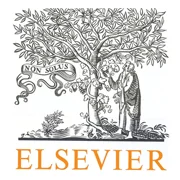دانلود ترجمه مقاله استراتژی صادرات، شدت صادرات و یادگیری
| عنوان فارسی |
استراتژی صادرات، شدت صادرات و یادگیری: ادغام چشم انداز منابع و دیدگاه سازمانی |
| عنوان انگلیسی |
Export strategy, export intensity and learning: Integrating the resource perspective and institutional perspective |
| کلمات کلیدی : |
استراتژی صادرات؛ شدت صادرات؛ یادگیری؛ محیط سازمانی؛ صادرکنندگان فرارگرا |
| درسهای مرتبط | مدیریت بازاریابی و صادرات |
| تعداد صفحات مقاله انگلیسی : 12 | نشریه : ELSEVIER |
| سال انتشار : 2018 | تعداد رفرنس مقاله : 78 |
| فرمت مقاله انگلیسی : PDF | نوع مقاله : ISI |
|
پاورپوینت :
ندارد سفارش پاورپوینت این مقاله |
وضعیت ترجمه مقاله : انجام نشده است. |
1. مقدمه 2. مروری مختصر بر مقالات 3. توسعه نظریه 4. روش ها 5. تحلیل ها و نتایج 6. بحث و بررسی و نتیجه گیری

دلالت های تحقیق و پیشنهاداتی برای تحقیقات آینده: باید توجه داشت که این تحقیق تا حدود زیادی به تاکید بر اهمیت روش ادغام در مطالعه شرکت های صادراتی کمک کرد. ابتدا سعی کرد مقدمات و نتایج عملکرد تحقیقات صادرات را ادغام کند. به طول کل مقالات مربوط به صادرات در IB سه جریان تحقیقی عمده را در بر می گیرد، که به ترتیب به مقدمات برای صادرات (مثل هیت، تیانی، میلر و کونلی، 2006)، عملکرد صادرات (مثل سوسا و همکارانش، 2008)، و انتخاب کانال صادرات (مثل برادرز و هنارت، 2007) تمرکز دارند. این تحقیق با افزودن انگیزه (گریز) منحصر برای صادرات توانست تصویر کامل تری از تعیین عملکرد (یادگیری و EI) در صادرات نسبت به تحقیقات قبلی ارائه دهد. با توجه به مزایای حاصل در تحقیق حاضر، ما تحقیقات آینده را تشویق می کنیم که کارهای ادغام بیشتری را در این جنبه امتحان کنند، مثلا ادغام انتخاب کانال با انگیزه های مختلف و بررسی تاثیرات مشترک آنها بر عملکرد کارشناسی. دوماً، همانطور که در بالا نیز عنوان شد، سعی کردیم IBV و RBV را در عرصه اقتصاد نوظهور ادغام کنیم تا این پدیده ها را به شیوه کامل تری بررسی کنیم. با بررسی همزمان متغیرهای خاص شرکت (RBV) و متغیرهای سطح زیست محیطی، توانستیم انگیزه های درونی (گسترش) و انگیزه های بیرونی (گریز) را شناسایی کنیم، و هر دو دغدغه های اقتصادی / بازار (گسترش) و فاکتورهای سازمانی غیربازار (گریز) را ادغام کنیم. تلاش های ما در تحقیق حاضر هنوز اندک است و کافی نیست، اما امیدواریم محرکی برای تحقیقات بیشتر درباره ادغام RBV و IBV در کل و بویژه بررسی کارشناسی باشد. با تلفیق هر دوی این چشم اندازها، به پدیده جالب تری می رسیم و واقعیت را دقیق تر و جامع تر بررسی می کنیم. بعلاوه، معتقدیم نظریه پردازی ما براساس واقعیت سازمانی در اقتصادی نوظهور و مطالعه تجربی ما روی شرکت ها در چین به نشان دادن سودمندی استفاده از زمینه اقتصاد نوظهور برای پر کردن خلاء تئوری در تحقیقات مربوطه و به طور کل تحقیقات IB کمک کرد. امیدواریم چنین کارهایی برای ادغام چشم اندازهای نظری بیشتر و بررسی بهتر استراتژی های بین المللی شرکت ها انجام گیرد. هم چنین تحقیقات بیشتر به منظور بررسی تاثیرات این استراتژی های کارشناسی مختلف بر جنبه های مختلف عملکرد شرکت را تشویق می کنیم، مثل عملکرد کلی شرکت و تغییرات آن، علاوه بر یادگیری که در اینجا بررسی شد.
Research implications and suggestions for future research: It should be noted that, to a great extent, this study helped underscore the importance of the integrative approach in the study of exporting firms. First, it attempted to integrate the antecedents and the performance outcomes of the export research. In general, the export literature in IB featured three major streams of research, focusing respectively on the antecedents to export (e.g., Hitt, Tihanyi, Miller, & Connelly, 2006), export performance (e.g., Sousa et al., 2008), and export channel selection (e.g., Brouthers & Hennart, 2007). By introducing a unique (escaping) motivation for export, this study was able to present a relatively more complete picture about the performance (EI and learning) determination in export than prior studies as documented in the literature. Given the benefits gained in this study, we certainly encourage future studies to attempt more integrative efforts in this aspect, e.g., the integration of channel selection with different motivations and the examination of their joint effects on export performance. Second, as mentioned above, we attempted to integrate both IBV and RBV in the emerging economy setting, aiming to look at the phenomenon in a more complementary manner. By simultaneously looking at firm-specific variables (RBV) and environmental level variables (IBV), we were able to detect both the internal driven motivations (expansion) and externally derived motivations (escape), and to incorporate both market/economic concerns (expansion) and non-market institutional factors (escape). Our attempts in this study are still minor and marginal, yet we hope it can be a trigger or reminder for more future studies on the integration of RBV and IBV in IB in general and in the study of export in particular. Combing both perspectives, we would spot more interesting phenomena and investigate the reality more precisely and comprehensively. Moreover, we believe that our theorizing based on the institutional reality in emerging economies and our empirical study of firms in China helped demonstrate the usefulness of using the emerging economy context to bridge theoretical gaps in the export literature as well as the overall IB literature. We hope more such efforts could be undertaken to integrate different theoretical perspectives and better examine firms’ international strategies. We also encourage future studies to examine the impacts of these different export strategies on different aspects of firm performance, e.g., overall firm performance and its variations, in addition to the learning examined here.



دیدگاهها
هیچ دیدگاهی برای این محصول نوشته نشده است.